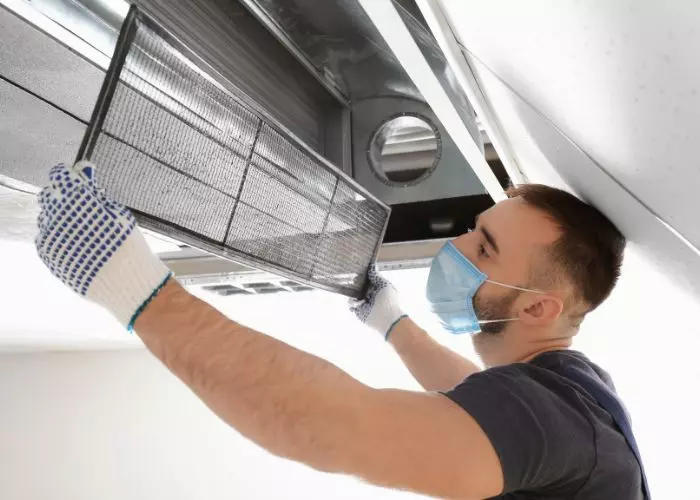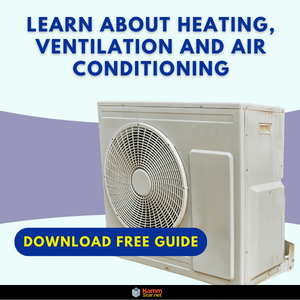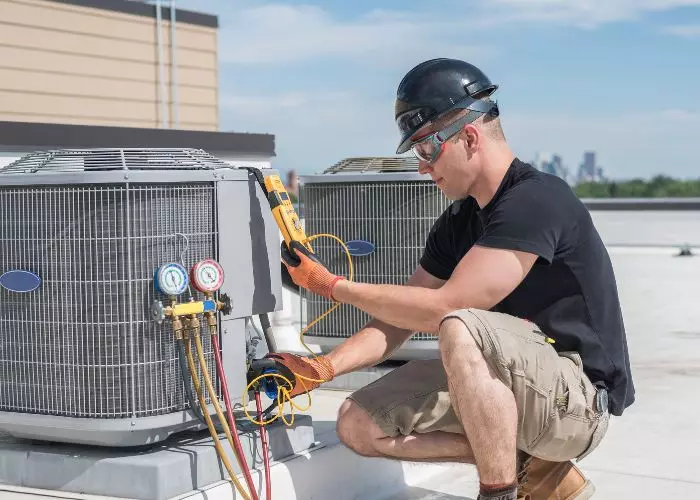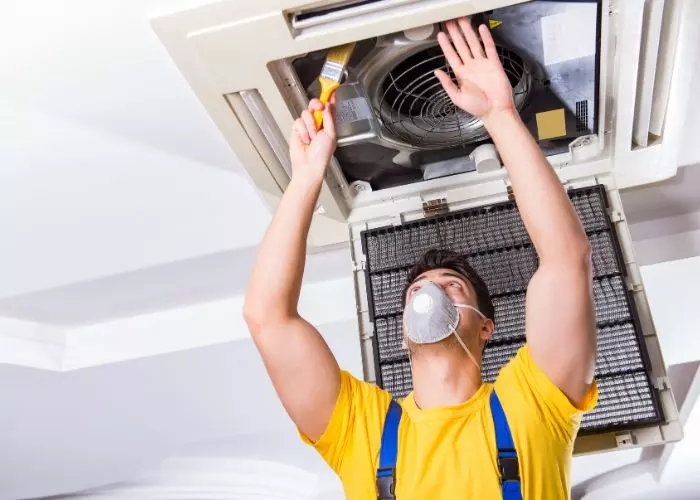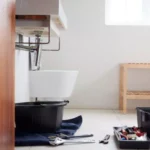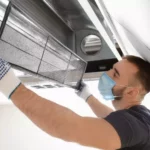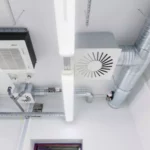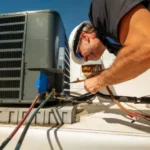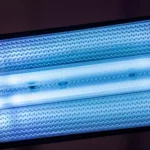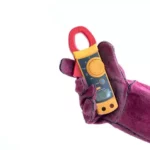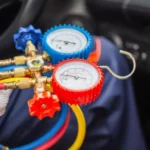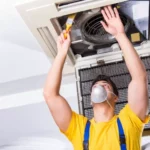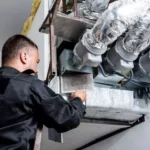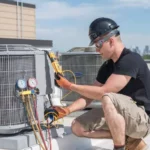Maintaining a well-functioning HVAC (which is Heating, Ventilation, and Air Conditioning) system is essential for creating a comfortable and healthy living environment in our homes. However, amidst the focus on HVAC units and filters, the condition of ductwork is often overlooked.
Ductwork serves as the circulatory system of your HVAC setup, responsible for distributing conditioned air throughout the house. Over time, factors like age, wear and tear, poor installation, and environmental elements can lead to ductwork deterioration. This degradation results in reduced airflow, energy wastage, and compromised indoor air quality.

Understanding the Lifespan of Ductwork
HVAC ductwork is designed to last between 10 to 15 years, but its longevity can be influenced by various factors. Poor initial installation, inadequate insulation, and exposure to extreme temperatures can accelerate deterioration. Regular inspections and timely repairs can help extend the ductwork’s lifespan and maintain system efficiency.
Regular inspections and maintenance can provide valuable insights into the health of your ducts, identifying signs of wear and tear. Understanding the lifespan of your ductwork helps you plan and budget for a timely replacement, preventing unexpected breakdowns and ensuring optimal performance for your HVAC system.
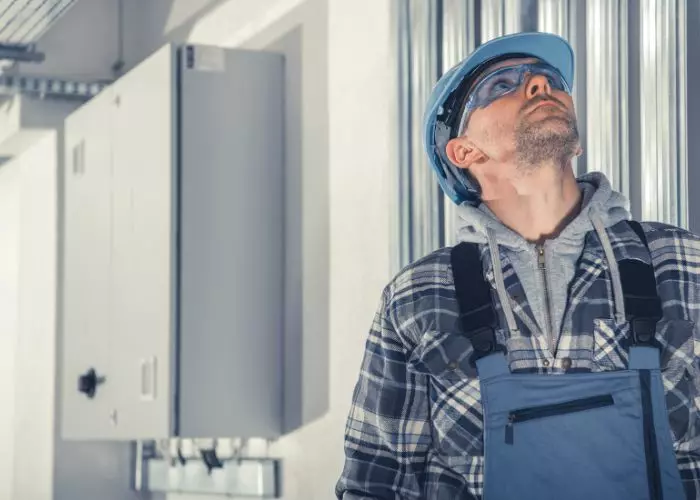
Indicators for Replacement
Recognizing the warning signs that signal the need for ductwork replacement is crucial in maintaining an efficient HVAC system. Inconsistent heating or cooling throughout your home, persistent dust and debris accumulation, unusual odors, or strange noises emanating from the ducts are all indicators of potential problems.
High energy bills or sudden temperature fluctuations may also suggest that your ducts are no longer functioning optimally. Being attentive to these signs allows you to address issues promptly and avoid further damage. Timely ductwork repairs can restore the system’s efficiency, ensuring comfortable and cost-effective indoor conditions.
Improving Energy Efficiency
Upgrading to modern, well-insulated ductwork can have a substantial impact on your HVAC system’s energy efficiency. Over time, aging ducts develop leaks and cracks, leading to air leakage, which forces your system to work harder to maintain desired indoor temperatures.
By investing in high-quality ductwork and ensuring proper installation, you can minimize air loss, reduce energy consumption, and cut down on utility costs. Enhanced energy efficiency not only benefits your finances but also reduces your carbon footprint, contributing to a more sustainable and eco-friendly environment.
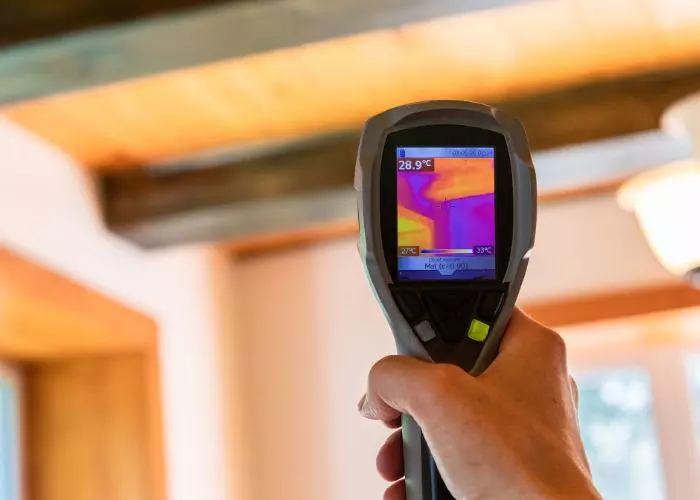
Enhancing Indoor Air Quality
The quality of indoor air has a direct impact on your health and well-being. Damaged and leaky ductwork can become conduits for allergens, dust, mold spores, and other contaminants to infiltrate your living spaces. This can lead to respiratory issues, allergies, and worsen existing health conditions.
By replacing old ductwork with well-sealed and properly insulated alternatives, you can create a healthier environment by preventing the circulation of pollutants. Improved indoor air quality translates to better respiratory health and increased comfort for occupants, promoting overall well-being and productivity.

Professional vs. DIY Ductwork Replacement
When facing ductwork replacement, homeowners may consider taking a do-it-yourself approach to save costs. However, ductwork installation is a complex task that requires technical expertise and specialized equipment. A professional HVAC contractor possesses the necessary knowledge and skills to conduct a thorough assessment and design an efficient duct layout.
Also, if you choose professional services ensures the job is done right the first time, minimizing the risk of future problems and maximizing the benefits of your new ductwork. Investing in certified professionals guarantees long-lasting results and peace of mind. Study more about HVAC in our blog.
Frequently Asked Questions
Why is maintaining HVAC ductwork important for indoor air quality and comfort in homes?
Maintaining HVAC ductwork is crucial because it serves as the circulatory system of the HVAC system, responsible for distributing conditioned air throughout the house. Well-functioning ductwork ensures proper airflow, which directly impacts indoor air quality and comfort levels in our homes.
What are the signs that indicate the need for replacing HVAC ductwork?
Replacing old and damaged ductwork with modern, well-insulated alternatives helps to minimize air leakage. Air leakage from deteriorating ducts forces the HVAC system to work harder to maintain desired indoor temperatures, leading to higher energy consumption. With new, well-sealed ducts, the HVAC system operates more efficiently.
How does replacing HVAC ductwork improve energy efficiency?
Damaged and leaky ductwork can act as pathways for pollutants, allergens, and contaminants to infiltrate living spaces. By replacing old ductwork with well-sealed alternatives, the entry of these pollutants is minimized, leading to improved indoor air quality.Cleaner air promotes better respiratory health and provides a healthier living environment for occupants.
How does replacing HVAC ductwork enhance indoor air quality?
While some homeowners may consider DIY ductwork replacement to save money, it is generally not recommended. Ductwork replacement is a complex task that requires technical expertise and specialized equipment to ensure proper installation. Engaging certified HVAC professionals guarantees a seamless replacement process and reduces the risk of future problems.
Can homeowners attempt DIY ductwork replacement to save costs?
While some homeowners may consider DIY ductwork replacement to save money, it is generally not recommended. Ductwork replacement is a complex task that requires technical expertise and specialized equipment to ensure proper installation. Engaging certified HVAC professionals guarantees a seamless replacement process and reduces the risk of future problems.
Conclusión
In conclusion, Energy Recovery Ventilation (ERV) is an essential component of modern HVAC systems, offering energy efficiency and improved indoor air quality. By harnessing the power of heat and moisture exchange between incoming and outgoing air streams, ERV ensures a more sustainable and healthier living or working environment.
From reducing energy consumption to enhancing HVAC efficiency and promoting well-being, ERV has become a go-to solution for those seeking comfort and cost savings. As technology continues to advance, ERV is expected to play an increasingly significant role in creating a greener and more comfortable future for buildings worldwide.



